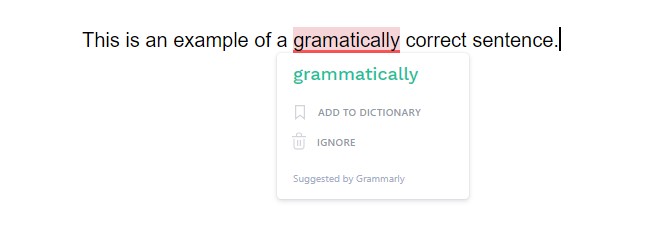Writing is a process, which can be time-consuming if you want to perform well. However, if you have tight deadlines, you need to work fast. In this article, we will give you tips on how to write faster and better.
Why Does Speed Matter?
Do you really need to write fast? It depends on your situation.
If you are a (freelance) writer who is paid per article – time equals money. The faster you work, the more articles you can submit, which also means the more money you will earn.
For those who work with deadlines, writing faster lets you finish your work earlier. This means that you will have extra time to re-read your content, including spotting mistakes and making edits to the content.
The same case goes if you have a blog with high traffic. Posting more often means that your visitors are well fed. In return, they could be more loyal to your content. It may also lead to your blog getting new visitors, as it increases your SEO too.
How to Write Faster and Better?
Everyone can write faster if they want, but what about the end result? The actual goal is to speed up the process while maintaining the quality, even making it better. Here are some tips to try right away.
Pomodoro Technique
Pomodoro Technique is a time management trick developed by Francesco Cirillo in the late 1980s. The idea is simple: while working on something, you should take a short break every 25 minutes.
While there’s no fixed formula as to how to do it, here’s the common practice used in many settings:
- Define the task
- Set the timer (usually 25 minutes, but you can adjust it accordingly)
- Work on the task
- Stop working when the timer rings. It’s best to use this time to relax.
- Repeat the process. After four breaks, you may rest for longer (15-30 minutes).
Doing this, we’re being conditioned to form a new habit, which is to break down your work into intervals. Give it a go to see if it helps to maintain longer focus on the task.
Plan Your Content
One of the best tricks to use when writing, is to plan your content ahead. So, if you have a posting schedule, try to sit down once in a while and plan out the topics you’ll write about.
This way, you won’t have to come up with post topics on the spot. What is more, when you have a list of post ideas, you’ll gather the information for it much quicker!
Write Briefs
A brief is an outline of the content you’re writing. It usually contains the main headings and little content snippets in each section. However, there’s no specific format for you to follow. As long as it helps you with your writing, make your own template and go for it.
If you’re writing about the best SEO plugins, for example, here’s what the brief could look like:
“Introduction:
Why SEO?
Explain how SEO could help your website to rank well on search engines and elaborate on why it is important.
The Best Free SEO Plugins
*the list
The Best Premium SEO Plugins
*the list
Conclusion
Sum up everything that has been learned. Provide a short summary of each plugin along with its strongest feature.”
Simply put, briefs enable you to see the whole picture of your finished content. It gives you the basic sentence structure to work on and expand further.
Write about What You Know
Writing about something that you already know is a lot easier. As the need for learning something new is not present, it will save you a great deal of time.
However, if you are a writer employed by someone else, most of the time you can’t choose what to write.
If that’s the case, you can try reading the material first prior to playing with words. The process itself may take some time, but it’s far better than writing without knowing anything.
Don’t Be Scared of Scattered Information
The classic problem for many writers is thinking too much of their work before they are finished. This sometimes includes reading their on-going work over and over again.
Don’t do that. It’ won’t do anything other than distracting your attention and taking too much of your time. Let the content be scattered all around for a while. There’s a time and place for editing your work.
Try it once and you’ll notice how much time you could save by writing and editing your work separately.
Know When You Are Most Productive
A significant part of writing great content is ‘being in the right mood’, which differs from one person to another.
That being said, think of your own personal best time and try writing at that moment. If you notice some significant differences, congratulations! You might have just found your perfect time for writing.
This also applies to your work environment. If you tend to work from home, try experimenting with your workspace – maybe you feel most comfortable and focused next to your desk, sitting on a couch or even laying on your excellent Saatva mattress. Each person is different, so everyone can have different favorite working spots.
Use Grammar Software
A simple mistake can alter the whole meaning of a sentence
To prevent those little-yet-important mistakes from happening, make sure you have a grammar software installed on your computer/browser. Our top recommendation is Grammarly. The free version alone can already check both spelling and simple grammar.

Grammarly correcting a wrong spelling
Take Breaks
Don’t tire yourself writing non-stop. Otherwise, it may take a toll on your writing and the editing may take longer later.
Get up from your chair, drink coffee, or do something relaxing that could put you back in the mood. After all, you don’t want to feel like you’re forced to write. You write because you want to.
Turn Off Social Media
Social media could bring many opportunities to business, including the ones related to content writing. On the other hand, it could be the most toxic thing for a writer – checking it every 5 minutes even though we know we shouldn’t.
The solution is simple, turn it off during your writing session. It might be hard at first and you might feel something is missing. Just bear with it for a while. The next thing you know is you have written hundreds of words, probably with little to no mistakes too!
Useful Apps
Sometimes you may have to type the same words over and over again. It is not effective, especially when the words are hard to type (mostly technical terms).
You can use several apps to automate that process, namely TextExpander, Breevy (Windows), and TypeIt4Me (Mac). If you’re having a hard time dealing with distractions, try Ommwriter. It will block out other pages and apps other than your writing area.
The classic way of writing is doing it on text processing software, mainly Microsoft Word. But, consider using Google Docs, especially if you’re working collaboratively – sharing your work online is easier. You don’t need to worry about losing data, as it saves your work automatically every time changes are made.
There are a lot more apps to help you with fast writing such as MindNode (creating visual outlines), Ever Note (note-taking and scheduling), and Cofftivity (relaxing audio background).
Conclusion
While it’s true that writing should be an enjoyable process, it doesn’t mean that you can write at your own pace all the time. Sometimes time constraint does apply and, as a professional writer, you have to handle it properly.
We’ve covered the best tricks for you to try right away. They are:
- Plan your content
- Make briefs
- Start with what you know
- Know when you are most productive
- Use grammar software
- Take breaks
- Turn off social media
- Use external apps
It may not give you direct results after one try, but gradually it will. Considering that fast writing is like a habit, the best way to develop a new one is by doing it consistently.









